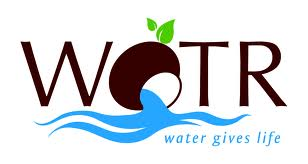/sub-categories/applications-and-other-software-programs
Applications and other Software Programs
Invite to programme 'Training of Trainers in Sustainable Sanitation and Water Management', SaciWATERs-Cap-Net Network (SCaN), Hyderabad, November 22 - 26, 2013
Posted on 30 Sep, 2013 11:48 AMFor more information on the organisers, please click here.
For details on the online learning and implementation support tool, SSWM Toolbox, that is apart of the training programme, please click here.

Training on basic & advanced analysis using SPSS
Posted on 06 Apr, 2013 12:49 PMExcella Orbit, a division of Sambodhi Research & Communications Pvt. Ltd., announces the training programme on Basic and Advanced Analysis using SPSS to be held at following cities; June 23 - 26, 2009 - Chennai, July 15 - 18, 2009 - Mumbai, July 28 - 31, 2009 - Hyderabad, August 10 - 13, 2009 - New Delhi. The aim of the programme is to enable participants to Input data into SPSS, select appropriate data analysis techniques, perform requisite analyses using SPSS, interpret the data output for various decision- making needs and present output to specific users in user friendly manner.
Mobiles come to the aid of farmers in Maharashtra, and help give locale-specific agro-advisories
Posted on 12 Jan, 2013 03:56 PM
Geospatial technology for groundwater management – An article in Geospatial World
Posted on 13 Jul, 2011 03:05 PM
A demo on the use of hydrosheds (hydrological data & maps based on shuttle elevation derivatives) at multiple scales for Orissa
Posted on 27 Apr, 2011 02:21 PMThe national hydrographic dataset can be used to delineate watersheds and mark all streams and channels that contribute to the flow at the outlets of these watersheds. Even though I was able to find out pdfs created by the National Information Center, I felt we need something better than the pdfs.
Groundwater Information System - Data on groundwater quality and level for all states of India from 2005-09 from the Central Groundwater Board
Posted on 14 Feb, 2011 12:45 PM
Steps to access the data:
Remote sensing applications: A book by NRSC (2010)
Posted on 01 Feb, 2011 05:52 PM
The book covers 16 chapters addressing various applications starting with introduction, state of art technology, case studies, literature review, future trends besides providing relevant references which are more useful for operational scientists and researchers. The resource scientists from Remote sensing & GIS applications area have contributed these chapters.
Learning package on Hydrology by the National Institute of Hydrology
Posted on 12 Jan, 2011 09:15 PMThis “Learning Package on Hydrology” by the National Institute of Hydrology deals with the basic scientific concepts underlying hydrology. In a general sense the package deals with elements of the hydrologic cycle and explains the processes of rainfall, runoff and evapotranspiration and their interaction.
High altitude wetland protected areas in western Arunachal Pradesh - Identification and demarcation using GIS
Posted on 27 Dec, 2010 11:15 PMGuest Post by Shashank Srinivasan
High altitude wetlands in the Indian Himalayas are crucial to the water security of downstream communities. They buffer the flow of glacial meltwater to sustain river flow in the dry season, ensuring that human settlements have access to water when they need it most.
High altitude wetlands are also reservoirs of biodiversity and contribute local livelihood opportunities. Identifying these wetlands and demarcating areas for their protection is thus crucial to any wetland management plan.
In this poster, a method of using topographic data obtained by remote sensing techniques, to identify the catchment areas of these wetlands has been described.
The author suggests that the protection of these catchment areas will ensure the survival of these wetlands, as well as of the communities that depend on them.
The global water tool by the World Business Council for Sustainable Development (WBCSD)
Posted on 12 Dec, 2010 04:18 PMThe WBCSD's Global Water Tool, launched at World Water Week 2007 in Stockholm and updated in 2009 for the